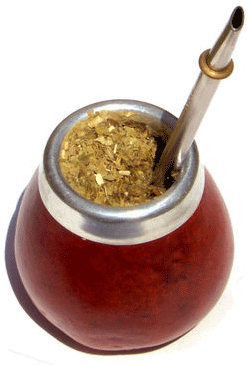Mate causes neonatal abstinence syndrome

The premature newborn of a mother who reported drinking mate during pregnancy presented with increased jitteriness and irritability, high-pitched cry, hypertonia in the limbs, and brisk tendon reflexes consistent with neonatal withdrawal syndrome.
High concentrations of caffeine and theobromine were detected in various maternal and neonatal biological matrices (placenta, cord serum, neonatal urine, maternal and neonatal hair, meconium, and breast milk), demonstrating both acute and chronic prenatal and postnatal exposure to these methylxanthines, contained in high amounts in homemade mate.
Symptoms progressively disappeared at 84 hours of age, although intermittent irritability was still present when the infant was discharged at 24 days of age. Fluctuating caffeine (and theobromine) content in different breast milk feeds likely generated the baby's irritability, due to either the physiological stimulatory effects of the methylxanthines or postnatal withdrawal syndrome as the substances cleared from the body. The mother was strongly advised to initiate a considerable, progressive, constant reduction of mate consumption to a maximum of 2 cups a day for the duration of breastfeeding.
References
Itziar Martín, Mª Ángeles López-Vílchez, Antonio Mur, Óscar García-Algar, Silvia Rossi, Emilia Marchei, Simona Pichini. "Neonatal withdrawal syndrome after chronic maternal drinking of mate". THERAPEUTIC DRUG MONITORING, 29 (1): 127-129 FEB 2007.


